Best GraphQL Query Guides to Buy in December 2025
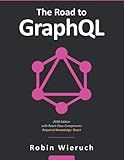
The Road to GraphQL: Your journey to master pragmatic GraphQL in JavaScript with React.js and Node.js



Black Hat GraphQL: Attacking Next Generation APIs


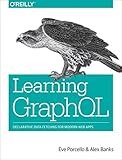
Learning GraphQL: Declarative Data Fetching for Modern Web Apps


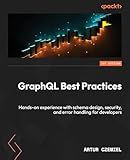
GraphQL Best Practices: Gain hands-on experience with schema design, security, and error handling



Beginning GraphQL with React, NodeJS and Apollo


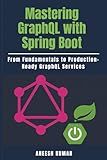
Mastering GraphQL with Spring Boot: From Fundamentals to Production-Ready GraphQL Services



GraphQL in Action



Full Stack GraphQL Applications: With React, Node.js, and Neo4j


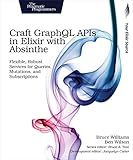
Craft GraphQL APIs in Elixir with Absinthe: Flexible, Robust Services for Queries, Mutations, and Subscriptions


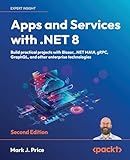
Apps and Services with .NET 8: Build practical projects with Blazor, .NET MAUI, gRPC, GraphQL, and other enterprise technologies


In GraphQL, variables can be used to pass dynamic values to a query. This allows us to write reusable queries that can accept different input values.
To use variables in a GraphQL query, we need to define the variables in the query itself. This is done by adding a "variable definition" block at the beginning of the query, where we specify the name of the variable and its type.
In the query itself, we can then reference the variable using the "$" sign followed by the variable name. When executing the query, we need to provide the variable values as a separate JSON object.
For example, if we have a query that accepts a variable called "id" of type "ID", we would define it in the query like this:
query ($id: ID!) { user(id: $id) { name } }
When executing the query, we would provide the value for the "id" variable like this:
{ "id": "123" }
This allows us to reuse the same query with different input values, making our code more flexible and maintainable.
What is the data type for variables in a GraphQL query?
In a GraphQL query, the data type for variables can vary, depending on the type of data being passed in as a variable. Some common data types for variables in a GraphQL query include:
- Int: A signed 32-bit integer value
- Float: A signed double-precision floating-point value
- String: A sequence of characters
- Boolean: A true or false value
- ID: A unique identifier, often represented as a string
Additionally, GraphQL allows for custom scalar data types to be defined for specific use cases. These custom scalar types can be used to represent more complex data structures, such as dates, times, and other specialized data formats.
What is the default value for variables in a GraphQL query?
The default value for variables in a GraphQL query is null. If a variable is not provided when executing the query, it will be set to null by default.
What is the scope of variables in a GraphQL query?
In a GraphQL query, the scope of variables is limited to the query in which they are defined. This means that variables can be used within the query to pass arguments to fields or directives, but they cannot be accessed outside of the query. This provides a level of encapsulation and allows for more flexible and reusable queries.
What is the purpose of using variables in a GraphQL query?
Variables in a GraphQL query are used to pass dynamic values into a query at runtime. This allows for more flexible and reusable queries, as the values can be determined or changed when the query is executed rather than hardcoding them into the query itself. Variables also help to improve query performance by reducing the need to rebuild and reprocess the entire query for each different set of input values. Overall, using variables in a GraphQL query helps to make queries more dynamic, efficient, and easier to maintain.
How to use variables in a GraphQL query?
In a GraphQL query, variables can be used to pass dynamic values into the query at runtime. This allows for more flexibility and reusability of the query. Here's how you can use variables in a GraphQL query:
- Define the variables in the query:
query GetMovie($movieId: ID!) { movie(id: $movieId) { title genre } }
In the above query, $movieId is a variable of type ID that will be passed into the query at runtime.
- Provide the variable values when executing the query:
{ "movieId": "abc123" }
When executing the query, you can provide the variable values as a separate JSON object. In this case, the value of movieId is abc123.
- Pass the variables into the query when executing it:
query GetMovie($movieId: ID!) { movie(id: $movieId) { title genre } }
In the query execution, you need to pass the variables object along with the query. The GraphQL server will replace the variable placeholders with the actual values provided at runtime.
By using variables in a GraphQL query, you can make your queries more dynamic and reusable, as well as prevent potential security risks like SQL injection attacks.
What is the outcome of overloading variables in a GraphQL query?
In GraphQL, overloading variables refers to passing in more variables than the query or mutation is designed to accept. The outcome of overloading variables in a GraphQL query depends on how the server is implemented.
In general, if a GraphQL server is well-designed, it may simply ignore any extra variables that are provided and only consider the variables that are explicitly defined in the query or mutation. This means that the query will still be executed, but the extra variables will not have any effect.
However, in some cases, overloading variables can cause errors or unexpected behavior in the GraphQL query. The server may reject the query entirely and return an error message, or it may try to interpret the extra variables in some way, potentially leading to incorrect results or unintended side effects.
To prevent issues related to overloading variables, it is best practice to only pass in the variables that are explicitly defined in the GraphQL query or mutation. This helps ensure that the query behaves as intended and avoids any potential errors or unexpected behavior.
